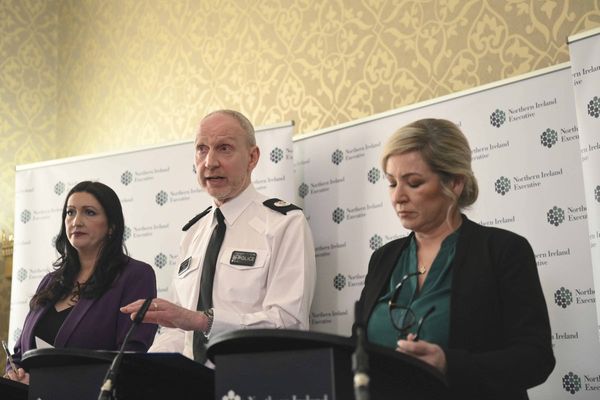
At the November 11 opening of the Jerusalem Biennale, the crowd that flocked to the beautiful old Shaare Zedek building included the usual mix of secular, religious, ultra-Orthodox and everything in between.
Yet the eyes of guests from outside the city, directed mainly at the haredi-looking visitors, betrayed the surprise, not to say the alienation, of those who do not live on a daily basis with this typical Jerusalem mix of people.
Despite the similar external appearance of haredim, the differences between the components of ultra-Orthodox society are deep. “Lithuanians,” hassidim, Jerusalem Faction, Eda Haredit and Neturei Karta, Sephardi haredim and the latest group – the “New Haredim” – represent 36% of the city’s Jewish population (which, according to the Central Bureau of Statistics, is close to 580,000).
The Jerusalem haredi sector represents 24% of the haredim across the country, while they represent 12% of the Jewish population of Israel.
In Jerusalem, most of them live in separate neighborhoods, but for the last decade or so, growing numbers have been moving into what had been considered, until not that long ago, secular or pluralist neighborhoods, creating a lot of tension and raising the level of suspicion regarding the intentions of the new neighbors.

In two such Jerusalem neighborhoods, Ramot and Kiryat Hayovel, the presence of the ultra-Orthodox has changed the character of the neighborhood – especially in Ramot, the city’s largest neighborhood, where the secular public has become a minority. In Kiryat Hayovel, meanwhile, the haredim are still not the majority, but the struggle for the character of the old neighborhood knows not a dull moment.
In Ramot, the haredim, most of them “Lithuanians,” have tried for more than 20 years to hold general elections for the local council, assuming they had a serious chance to take control of the neighborhood through their numbers and voting discipline. That struggle ended last week as the municipality decided to hold two elections, one for the pluralists and one for haredim, with equal budgets for both.
This was just one among many cases in which the Lithuanian faction at city council led a struggle for the entire haredi sector; but, generally speaking, the tensions between the Lithuanians and the hassidim inside the haredi sector are deeper and more frequent than an outsider would guess.
The major reason is that the Lithuanians consider themselves to be stronger guardians of the haredi way of life – with, at its center, complete dedication to Torah study.
“I know I am serving my community,” Yitzhak Pindrus, then deputy mayor, told me years ago. “But when I come to my synagogue, I know that my place is in a row behind those who spend all their lives at the yeshiva and in study.”
SO WHO are the haredim of Jerusalem and what differentiates their specific groups?
In Jerusalem in the coming weeks will report on the backgrounds, characteristics and distinct aspirations of the groups that make up this sector, starting with the older group in the Ashkenazi ultra-Orthodox world – the Lithuanians, or “Litvaks.”
They are so named because they largely preserve the traditions of Lithuanian yeshivot of Eastern Europe, spearheaded by the Vilna Gaon and his supporters, who opposed the hassidic movement that arose in the late 18th century. This was soon followed by the yeshiva institution as it exists these days, with three “shifts” of studies per day, ending around 11 p.m., also including the Musar movement that became identified with the Lithuanians.
In their common struggle against the Enlightenment, modernism, socialism and Zionism, the confrontation between the two streams – Lithuanians and hassidim – weakened but never really disappeared.
Today, the Lithuanian stream makes up about a third of the ultra-Orthodox sector, and its major emphasis is dedication to Torah study. Although the image of the entire Israeli haredi public is one where the men study Torah and do not work for a living, this image is especially applicable to the Lithuanians, who have the highest proportion of men who spend most of their time studying in kollelim, yeshivot for adult married men only. Lithuanians consider themselves as an “elite” unit in the haredi world, as they lead the higher level of dedication to Torah study for life.
Lithuanians wear suits, a black hat (preferably a Borsalino) and tie, unlike the hassidim, who avoid ties and shoelaces. The women have always been educated, and they all work, to enable the husbands not to. In Lithuanian society, the ideal marriage match would be a husband who studies and does not work.
In 2003, the Litvaks in Jerusalem decided, for the first time, to run a haredi candidate for the mayoral elections, and Uri Lupolianski was elected. Most Jerusalemites liked him, mainly for his record as the founder of Yad Sarah – but the real boss in Safra Square was Yehoshua Pollak, a powerful Litvak.
Today, the Litvaks are represented at the city council by Deputy Mayor Eliezer Rauchberger, Israel Kellerman, David Zohar and Chaim Epstein.
But what do the Litvaks of Jerusalem really want? Do they expect to reelect a haredi mayor? At some points during the past 15 years, it seemed so, as former deputy mayor Pindrus (now a United Torah Judaism MK) didn’t hide his ambition to be elected. But the rabbis, the spiritual leadership of the Litvak sector (not to be confused with the Admorim of the hassidic stream), were very apprehensive about it, preferring by far to support a non-haredi candidate to handle their interests.
Hence their strong support for Mayor Moshe Lion, elected in 2018 without any representative from his own list, who consequently owes his coalition – which includes 16 haredi council members – special attention to their needs.
But that does not mean that the Lithuanians in the city are satisfied. In a letter signed by neighborhood rabbis, they raised the problem of haredi children who are forced from a very young age to be transported by shuttle to other neighborhoods in inclement weather, instead of studying near their homes.
Moreover, the rabbis of the Neveh Ya’acov neighborhood gathered recently for an emergency discussion with Degel Hatorah (Lithuanian) representatives at city council, demanding solutions for the neighborhood’s religious centers, such as building mikvaot, synagogue allocations and equal distribution between communities.
Israel, a kollel head, says the Litvaks’ main concern is the abolition of the subsidy for the ultra-Orthodox daycare centers. “Since most Lithuanians do not work and only study all day, this has a terrible impact on their livelihood. In Jerusalem, they expect a lot from Lion on that issue.”
It is interesting to note that the call to reexamine the tradition of a society of learners that inflicts terrible poverty on this public came, two decades ago, from a prominent Litvak rabbi, Bezalel Cohen – one of the forerunners of a group now known as the New Haredim.
This is the first in a series on the different groups that compose the haredi sector.







